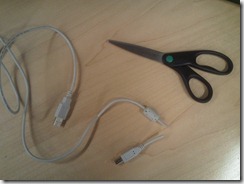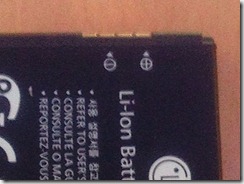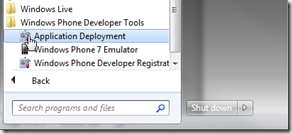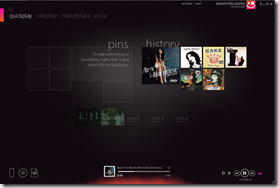
This a postmodern title for a silly problem. I am trying to consolidate my XBox gamer tag, my Zune Pass tag, and the different Windows Live IDs I use for these tags with the Live ID I use for my Windows Phone 7 and my WP7 marketplace account. After half an hour on the phone with XBox support, I’m not sure if I’ve gotten any closer to pulling myself together.
The nature of online identities has changed over the past several years. It used to be that it was a great idea to use anonymous handles online. The persona one used online to criticize Apple or Microsoft or the US government could hypothetically never be traced back to the real you. It was even a good idea to have multiple anonymous online handles. One would use various bogus email accounts to track junk mail, other ones to deal with the mortgage, another one to deal with the bank.
I was the circus master to an army of anonymous online daemons sent out to do my virtual bidding.
But things changed. It turns out that the web isn’t just a place to make a nuisance of oneself; it is also a place to garner and horde rewards. Tying the handle I use to make Amazon book recommendations with the one I use on MSDN forums with the one I use on my blog suddenly started seeming like a great idea, and so three years ago or so I started using my real name for everything. This was a matter of vanity, of course.
More recently, it has become a matter of necessity. I have about ten different Live IDs and I am trying to consolidate them all with my open id, facebook account, Blogger account, twitter account, etc. Microsoft has started tying the Zune Pass to Windows Phone and XBox. This is all great stuff – but only if all the IDs for these various services are consolidated.
When I got my Zune Pass, I was required to create a Zune tag and associate it with a Live ID. My XBox gold membership is also associated with a Live ID and gamer tag. Unfortunately, these are different IDs. Zune will let me switch gamer tags, but only if the one I want to switch to doesn’t already exist. XBox will let me associate my gamer tag with a different Live ID, but only if that Live ID doesn’t have a different gamer tag associated with it.
Just to make things a little clearer, I’ll provide some names. My XBox tag is DHTMLKing (I thought that particular Microsoft technology would take off back in the day) tied to my Live ID hotsweats@hotmail.com (a long story). My Zune Pass moniker is fightclubber3xY tied to my Live ID XamlMarkHamill@hotmail.com (this all became very confusing when I was on the phone with XBox support). My WP7 Marketplace account is fortunately tied to XamlMarkHamill also. XamlMarkHamill is the Live ID I want everything associated with, but I want to keep my achievements associated with DHTMLKing and my plays and recommendations associated with fightclubber3xY. Simple enough.
On the XBox console I can change the Live ID associated with DHTMLKing (yay) but not to a Live ID that is already associated with another Zune / XBox tag (boo). On the Zune website I can change gamer tags (yay) but not if that gamer tag already exists (boo). And on Zune for the XBox, I can create a new Zune Pass if I don’t already have one associated with my gamer tag / Live ID but I cannot simply associate my Gold membership with a pre-existing Zune Pass account (boo). I can link my various Live IDs on http://account.live.com (yay) but this doesn’t really let these IDs know anything about each other – it just provides a link so I can switch between Live IDs more easily (meh).
I was told by the very patient XBox support representative to recover the Zune Pass gamer tag on the XBox (since it only exists on the xbox.com website but has never resided on my game console) and then try to associate that gamer tag with a new Live ID – but I remembered reading something on Yahoo Answers indicating that doing this would also move my Zune Pass associated with that bogus gamer tag to the new Live ID also, which would be self-defeating.
So we went with plan B – I deleted the gamer tag I had just recovered (the second bogus fightclubber3xY one, that is), with the idea that if I could just get rid of that tag, I would finally be able to transfer my good gamer tag to the Live ID I would be freeing up. Unfortunately deleting the gamer tag I had just recovered doesn’t delete it from the Microsoft databases, it turns out. It just possibly makes it dormant.
I’m going to wait 24 hours in the hopes that 24 hours of dormant activity will kill that account. I’m really not sure. I think I have to stay away from the Live ID associated with that gamer tag and which I use for forums and my Zune Pass for 24 hours also. I’ll call XBox support back tomorrow and see if any of this worked. As far as I know, XBox gamer tags are supposed to be perpetual and are as hard to kill off as Jason Voorhees.
I really don’t want to dump on Microsoft. It’s been a rough year with the off kilter rumors of WPF being dead and then Silverlight being dead and anxiety about whether the Windows Phone and Kinect will take off as well as they need to.
But I’m really all in with Microsoft. I develop on Microsoft technology and they have been very good to me over the past fourteen years helping me to pay my mortgage and clothe my children as a Microsoft-centric developer. I’m also all in as a consumer with a Zune HD, an XBox, an XBox 360 which won’t play most of the games I bought for the XBox, a Windows Mobile device, a Windows Phone (delightful is the only word I can use to describe it under my NDA with Microsoft) and most recently a Kinect sensor (pure UX sweetness). Microsoft has been amazing with innovation in the past year and even preparing for HTML 5 seems like a good move to me – change is the only constant … blah, blah, vampire emergency, blah … and developers really need to adapt to the market, after all.
I just wish the stuff that should be easy were easier. Maybe linking large systems like the Zune and the XBox on the back-end isn’t as straightforward as changing a foreign key on this database table in the cloud or adding an index table between those databases in the cloud. And Microsoft divisions do tend to be balkanized, even if they all ultimately answer to the same man.
I was really hoping for a person on the phone who could press a button and get all my online identities un-balkanized, though. I feel like my Zune hand and my XBox hand won’t talk to each other and this is causing an identity crisis for us – for me, I mean.
[Update 11/7/2010 – I called XBox support back today after waiting the requisite 24 hours and it turns out that my vestigial gamer tag cannot be deleted. Also, there is no way to merge the different accounts right now. This is actually progress since the XBox rep knew right away that it can’t be done. It’s a known problem! Admitting you have a problem is, of course, the first step towards curing it so I have high hopes.
No timeline on when a solution will be available, but apparently lots of people are asking about how to merge their accounts now that Microsoft is encouraging them to use unified Live IDs, XBox gamer tags and Zune passes.]













